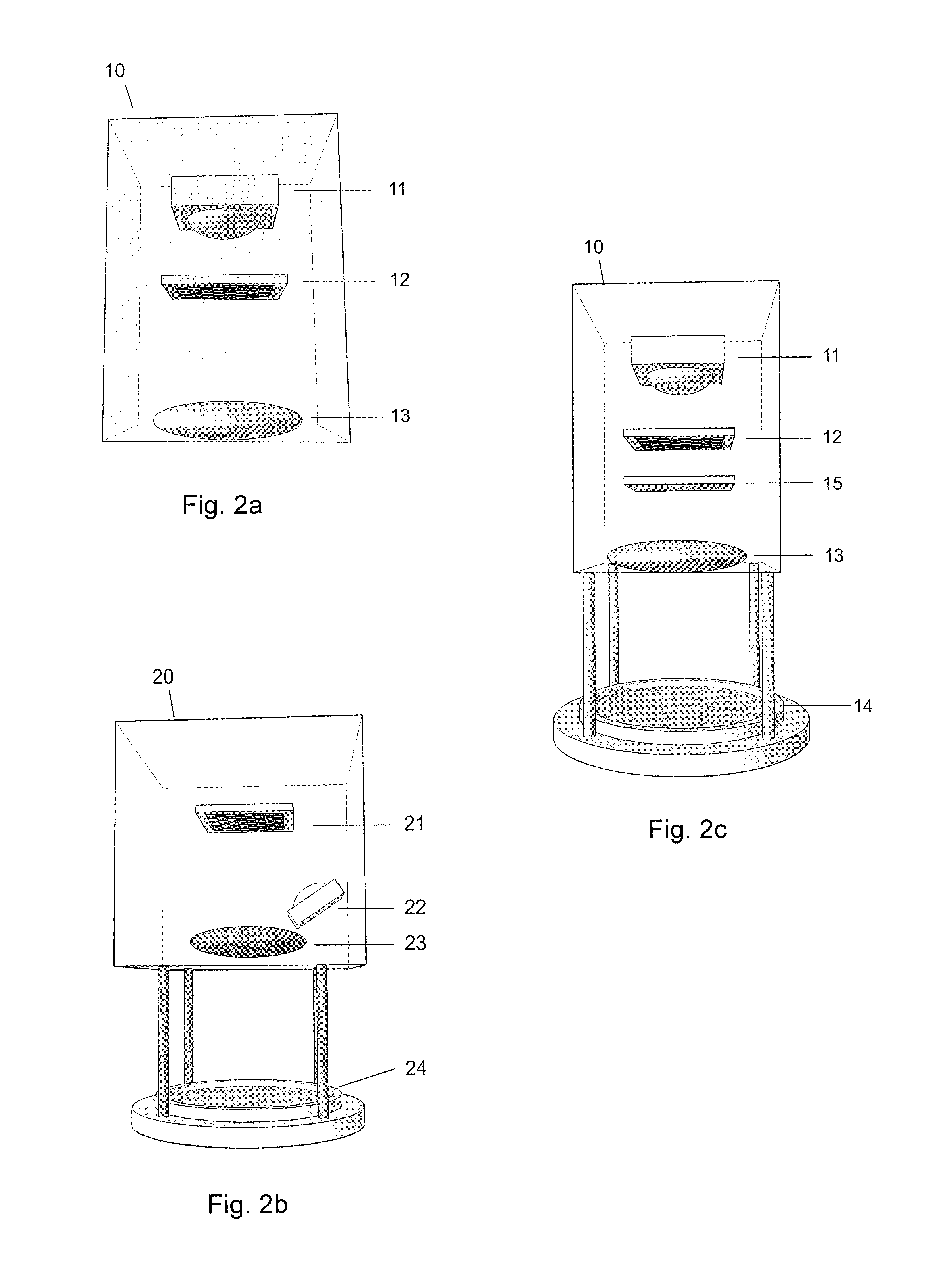Fast generation of elements with individually patterned anisotropy
- Summary
- Abstract
- Description
- Claims
- Application Information
AI Technical Summary
Benefits of technology
Problems solved by technology
Method used
Image
Examples
application example 1
[0146]A solution S(PA) is prepared by dissolving 3 wt % of the photo-alignable polymer P in a solvent mixture consisting of 97 wt % MEK and 3 wt % CHN.
The absorption coefficient α(390 nm) has been determined as 90500 [1 / cm].
[0147]A LCP-solution S1(LCP) is prepared by dissolving 15% by weight of mixture MLCP in a solvent mixture consisting of 97 wt % MEK and 3 wt % CHN.
[0148]Mixture MLCP comprises polymerizable liquid crystals and consists of:[0149]76.4% LC1[0150]14.3% LC2[0151]4.8% LC3[0152]4% Irgacure 907[0153]0.5% BHT
[0154]The apparatus for processing according to this application example comprises[0155]a first ink jet head comprising 16 nozzles of 18 μm diameter (REA Jet). The first ink jet head provides the solution S(PA),[0156]a 150 W IR lamp as a heater,[0157]an SLM exposure unit, which comprises a 0.7 inch diagonal DMD with 768×1024 micro mirrors (Texas Instruments) and a high power LED as a light source, which emits light at 390 nm. The exposure unit further ...
application example 2
Reel to Reel Processing
[0166]This example describes reel to reel processing, demonstrating the manufacture of individualized highly resolved images in a continuous manufacturing process.
[0167]A LCP-solution S2(LCP) is prepared by dissolving 30% by weight of mixture MLCP in a solvent mixture consisting of 97 wt % MEK and 3 wt % CHN.
[0168]The apparatus used in this example is a modified version of that of FIG. 6, since it is not equipped with the second coating unit 77, the second heating unit 79 and the curing unit 80. In addition to the embodiment of FIG. 6, the apparatus is equipped with a corona treating unit, positioned between the support 74 and the coating unit 76. The coating unit is of the type reverse kiss coating.
[0169]The same type of exposure unit 71 is used as described in application example 1 above. A 23 μm thick aluminised PET foil is used as a substrate, which continuously moves at a web speed of 5 m / min from support 74 to support 75. Accordingly, the substrate first...
application example 3
[0173]The same apparatus is used as described in application example 1. As in application example 1, an aluminised PET foil is coated with a layer of S(PA) and dried under the IR lamp. The sample is then moved under the SLM exposure unit. This time the image to be projected consists of 9 binary sub-images, as shown in FIG. 8. Each sub-image comprises 2 bright pixel-columns, while the remaining area is dark. The positions of the bright columns change from sub-image to sub-image. The set of sub-images is designed in such a way that the bright areas are not overlapping and that the sequential exposure of the whole set of images exposes the complete projection area. Furthermore the azimuthal direction of polarization is changed from exposure to exposure by turning the polarizer by 15° after each exposure as indicated by the arrows in FIG. 8.
[0174]After this multiple exposure, an LCP layer is coated on top the LCMO layer and dried and cured as described in application example 1.
[0175]The...
PUM
 Login to View More
Login to View More Abstract
Description
Claims
Application Information
 Login to View More
Login to View More - R&D
- Intellectual Property
- Life Sciences
- Materials
- Tech Scout
- Unparalleled Data Quality
- Higher Quality Content
- 60% Fewer Hallucinations
Browse by: Latest US Patents, China's latest patents, Technical Efficacy Thesaurus, Application Domain, Technology Topic, Popular Technical Reports.
© 2025 PatSnap. All rights reserved.Legal|Privacy policy|Modern Slavery Act Transparency Statement|Sitemap|About US| Contact US: help@patsnap.com



